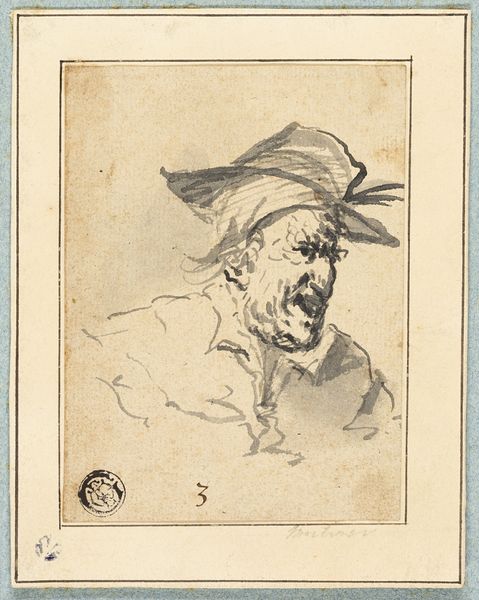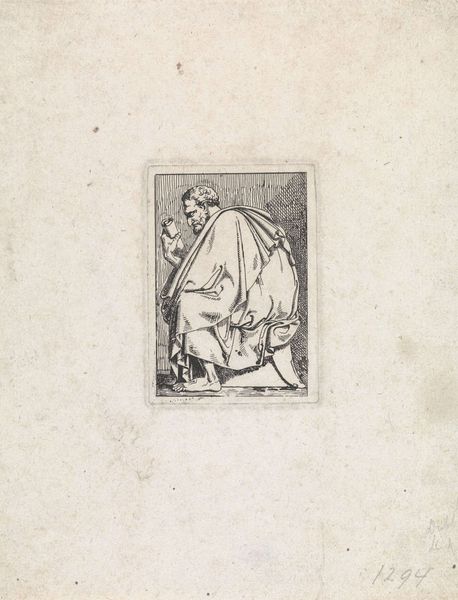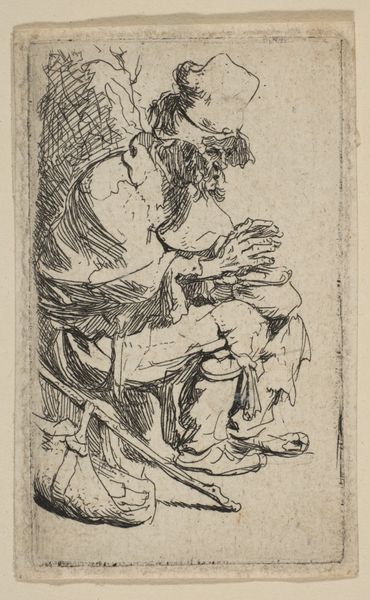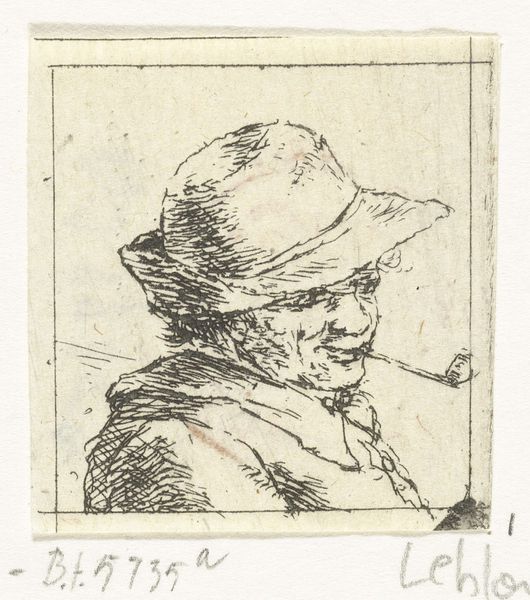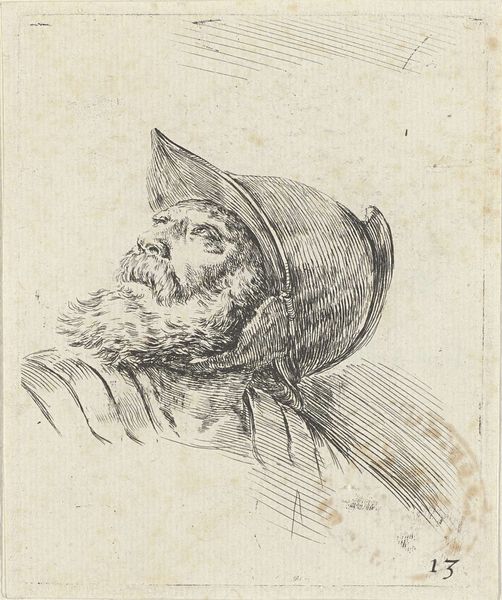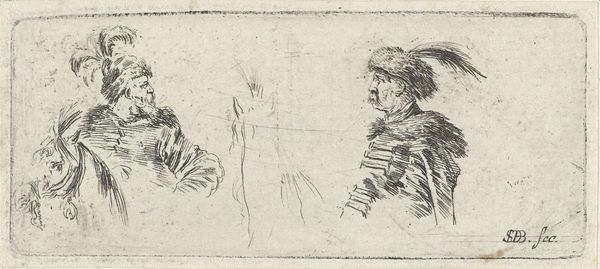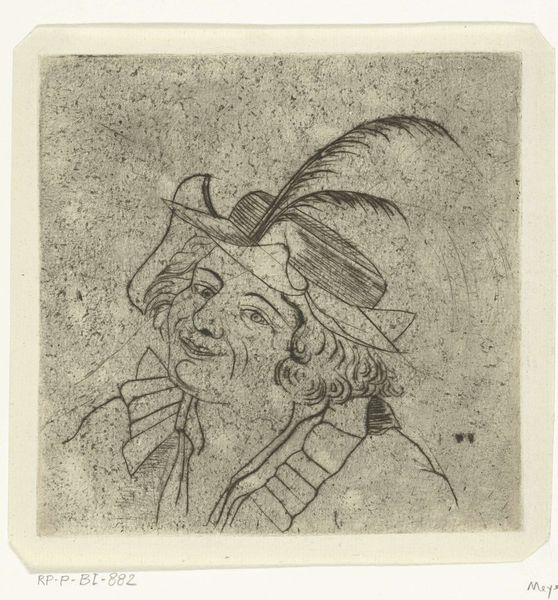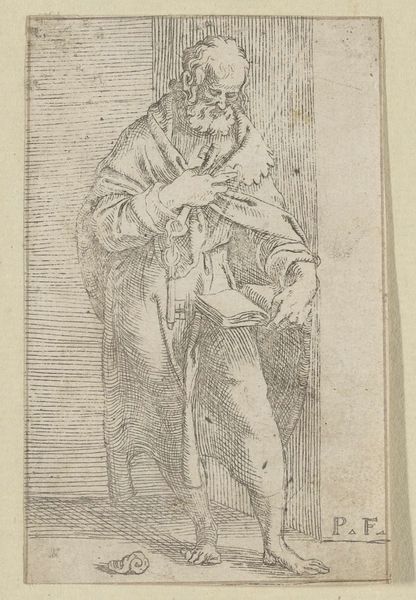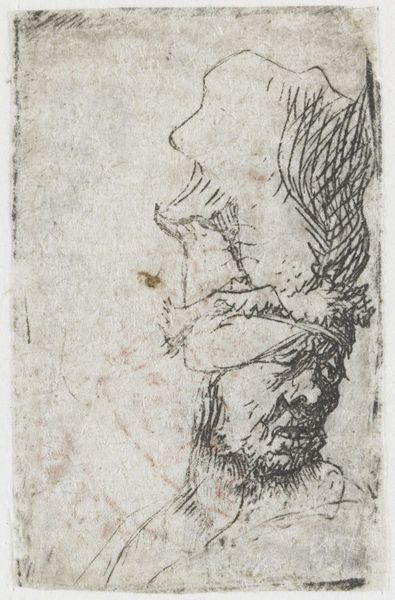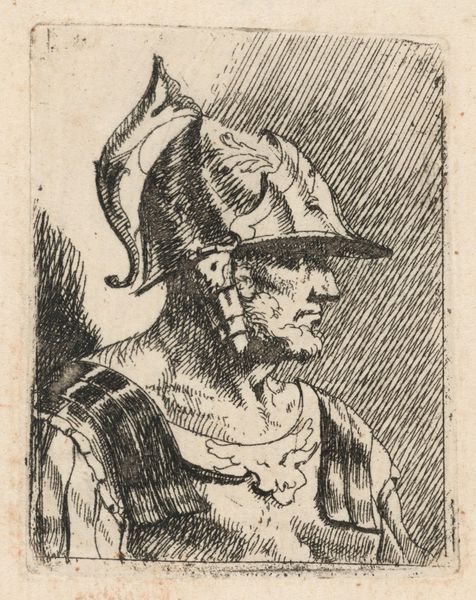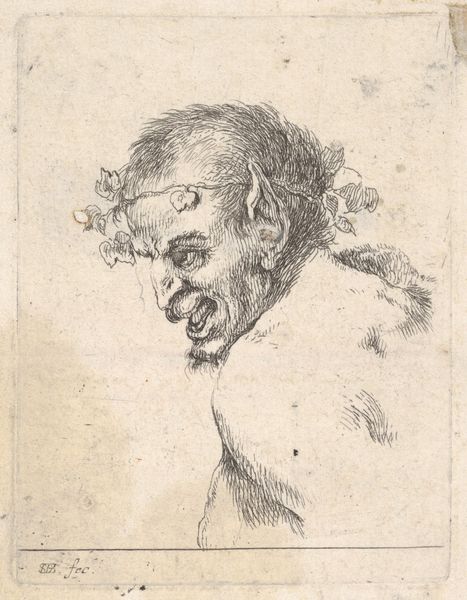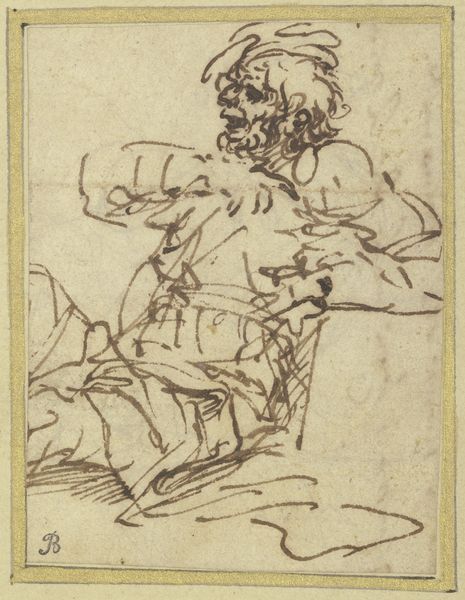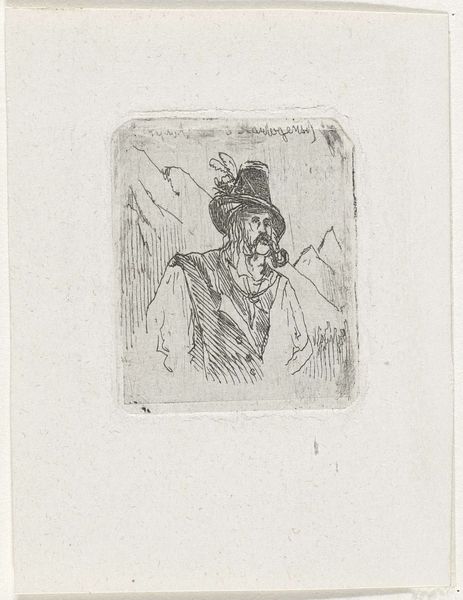
drawing, pen
#
portrait
#
drawing
#
aged paper
#
toned paper
#
light pencil work
#
quirky sketch
#
baroque
#
sketch book
#
figuration
#
personal sketchbook
#
sketchwork
#
sketchbook drawing
#
pen
#
history-painting
#
storyboard and sketchbook work
#
sketchbook art
Dimensions: height 32 mm, width 28 mm
Copyright: Rijks Museum: Open Domain
Samuel van Hoogstraten made this etching of a man with a feathered cap sometime in the 17th century. As an etching, this work is not made with traditional art materials like paint or marble, but rather with metal, acid, and ink. The artist would have covered a metal plate with a waxy, acid-resistant coating, then scratched an image into the coating with a needle. When the plate was dipped in acid, the exposed metal would be eaten away, creating lines. The plate was then inked, and the surface wiped clean, leaving ink only in the etched lines. Finally, the plate was pressed onto paper, transferring the image. The resulting print has a distinct texture and graphic quality. The fineness of the etched lines allows for a high level of detail, while the acid creates a slightly irregular, almost granular surface. The etching process, with its reliance on precise tools and chemical reactions, highlights the knowledge and skill involved in printmaking. It also made possible the widespread distribution of images, a key aspect of 17th-century visual culture. So we can appreciate this print not just for its artistic merit, but also for its significance as a mass-produced object.
Comments
No comments
Be the first to comment and join the conversation on the ultimate creative platform.
